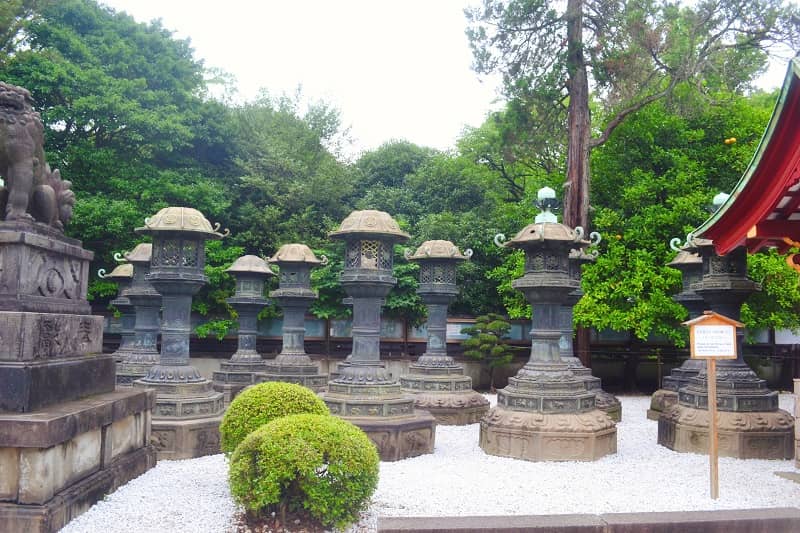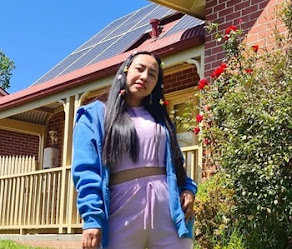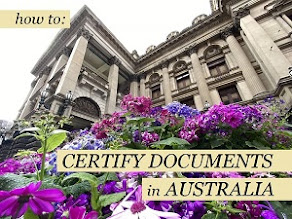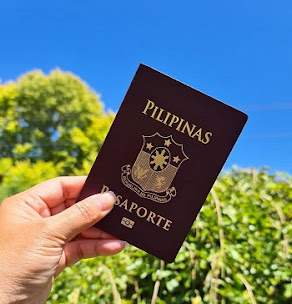Ueno Toshogu Shrine
Ueno Toshogu is a shrine in the time-honored Japanese religion of Shinto and was built and dedicated in 1627 to the memory of Tokugawa Ieyasu (1542 - 1616), the founder of the Tokugawa Shogunate. The Tokugawa Shogunate, having unified all of the feudal domains of Japan, formed the basis of the rule for the next 265 years in what came to be known as the Edo period. This accomplishment makes Tokugawa one of the most famous warriors throughout Japanese history, and his reputation as a prudent and patient leader is still respected among Japanese today.
The Ueno Toshogu Shrine was built on the same grounds of the Kaneiji Temple in 1627 by two men. One of the men was Todo Takatora, who was a powerful feudal lord (called daimyo in Japanese) and is famous for creating incredible castle designs. The other man was Tenkai Sojo, who has been credited as the brains behind Tokugawa Ieyasu’s actions and helped design the town of Edo (former name of Tokyo).
The main structure of this shrine was rebuilt in 1651 by Tokugawa Iemitsu, the 3rd Tokugawa Shogun and grandson of Ieyasu, and serves as an example of an architectural style representative of the Edo period: gongen- zukuri.
Ueno Toshogu Shrine has acted as one of the guardian shrines of Tokyo, facing in the direction of “kimon” with the aid of the Kaneiji Temple. The buildings of the shrine, the karamon (Chinese-style gate) and suibeki (wall), surround the main shrine building. The upper part of the wall is decorated with carvings of land creatures. The walls and gate shine with gold color. Both are designated as national properties because they have overcome several earthquakes and wars, and thus, they represent the incredible architecture of the Edo period (1600-1867).
 |
| Grand Stone Torii of Ueno Toshogu Shrine |
 |
| 50 copper lanterns used for purification during religious ceremonies |
50 copper lanterns
There are 50 copper lanterns at Toshogushaden Karamonmae (in front of Karamon gate of Toshogu shrine main building) and Sando (the approach to the shrine). The lanterns are not used for illumination purposes but are used for purification and sacred fires required when performing religious ceremonies. These copper lanterns were the offerings of the Daimyos (or feudal lords) from all over Japan to Toshogu Shrine. The names of the donors are written on the supports of the lanterns. These lanterns together with Toshogu shrine’s main building are designated as National Treasures of Japan.
 |
| Sukibei Wall |
Sukibei Wall
The Sukibei Wall, which surrounds the shrine building, was built in 1651. The upper part of the wall is decorated with carvings of land creatures. The lower part of the wall is adorned with carvings of the sea and river creatures. On the wall, you can find animals that exist in the real world, such as wild animals, birds, fishes, frogs, shellfish, butterflies, and mantis. You can also find mythical creatures as well.
 |
| Karamon (Chinese style gate) |
Karamon (Chinese style gate)
The Karamon was built in 1651. Gold foil as well as hand-carved flowers and birds ornately decorate the doors and both sides of the gate. Two dragons are curved on the gate pillars that stand on both sides of the Karamon. They are known as Ascending dragons and Descending dragons.
Legend has it that every night two dragons visit the Shinobazu-no-ike Pond to drink from its water.
 |
| Shrine structure |
Shrine structure
The shrine structure was built in 1651. Corridors surround the hall on three sides. All the pillars and doors are covered in gold foil. The ceilings are decorated with lacquer and colorful carvings. The interior of the shrine building is closed to the public. This is for the protection and preservation of this Japanese cultural treasure.
Peony garden (Botan-en)
Every year between New Year's Day through mid-February and mid-April through mid-May, Peony Garden (Bontan-en) is opened. (entrance fee:700yen/per person) Peony Garden was founded in April 1980 to mark the Japan-China friendship. The peony originates from China. Since ancient times, it has been known as the “King of the Hundred Flowers”, so widely familiar with medical and ornamental plants. It is also called the “noble and wealthy” flower and attracts widespread popularity as a blessed flower that brings people wealth, prosperity, fame, and fortune. It is said that the peony was introduced to Japan during the Nara period. Then, it was cultivated mainly at the imperial court and temples. However, it was during the Edo period that various types were produced, when the gardening culture was just communalized among the ordinary people. The peony’s popularity is clear with many references in Japanese haiku and common uses as a motif in art, patterns, and family emblems.
 |
| Handwashing stall |
Despite major earthquakes and wars, the structure has remained intact and has been designated as an important cultural property of Japan due to its representative nature of the Edo period. Many people from all over the world visit the shrine to experience true Edo period architecture.
Though visiting the shrine, itself is free of charge, there is a paid route within its wall (500yen). Visitors are not allowed into the main hall of the shrine, but as people can closely inspect and appreciate its traditional architecture and take pictures, the shrine has become a popular attraction. Its gorgeous buildings are trimmed in gold leaf and contain beautifully intricate carvings. Visitors are moved by the classic beauty of the traditional structure.
There are also a great number of people who come to pray for a number of reasons such as good fortune; passing examinations; vocational success; longevity; and recovery from illness. Ieyasu is believed to now be a powerful deity that visitors can pray to at this shrine for good luck.
In addition to Ieyasu, the 8th Shogun, Tokugawa Yoshimune, and the 15th and final Shogun, Tokugawa Yoshinobu, are also enshrined at Ueno Toshogu.
Popular souvenirs among foreign tourists from the shrine include charms for good luck, happiness, or longevity as well as amulets in the shape of old medicine boxes known as Inro.
Other fun activities include writing a wish on a small wooden plaque (Ema) and hanging it among the wishes of other visitors and buying a fortune slip(Omikuji). Both are a great way to make lasting memories while visiting the shrine.
 |
| Japanese ema |
Admission Charge
outside of the wall - FREE
Admission to the inside of the wall
Adult (over 13years old) - 500yen
Groups of over 20 people - 400yen per person
Children - 6 to 12 years old - 200yen
Children under 6 years old - Free
Shrine and peony garden - 1100yen (adult)
Open 9am - Close: Winter season(Oct.-Feb.)4:30pm / Summer season(Mar.-Sep.)5:30pm
Nearest Station Access
Ueno Station
・ Hokkaido Shinkansen Line
・ Tohoku Shinkansen Line
・ Akita Shinkansen Line
・ Yamagata Shinkansen Line
・ Joetsu Shinkansen Line
・ Hokuriku Shinkansen Line
・ JR Keihin-Tohoku Line
・ JR Yamanote Line
・ JR Tohoku Main Line
・ JR Utsunomiya Line
・ JR Takasaki Line
・ JR Joban Line
・ JR Ueno Tokyo Line
・ Tokyo Metro Ginza Line
・ Tokyo Metro Hibiya Line
Park Exit
5 minutes on foot Keisei Ueno Station
・Keisei Main Line
・Narita Sky Access
Ikenohata Exit
5 minutes on foot
TOP TIPS:
• You can take photos anywhere in around the shrine. But WEDDING PHOTO or taking a long time shooting is not permitted.
• Why don't you give the OMAMORI charm to your friends or family. Thave charms pray for happiness, longevity, health, educational success, passing exams, and more. All OMAMORI is 500yen one each.
•Always bring cash.
Address: 9-88Ueno Koen,Taito-ku,Tokyo,Japan
Phone: +81 3 3821 3455






























Post a Comment